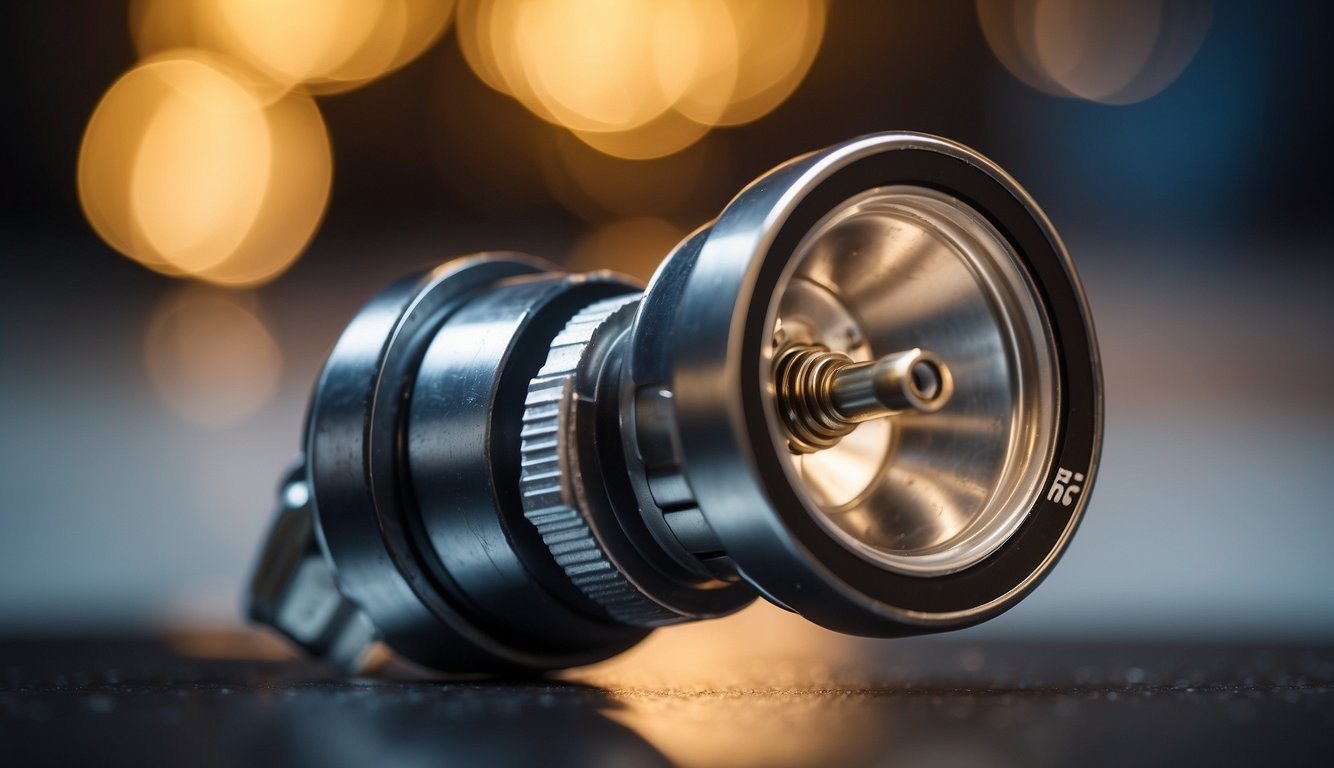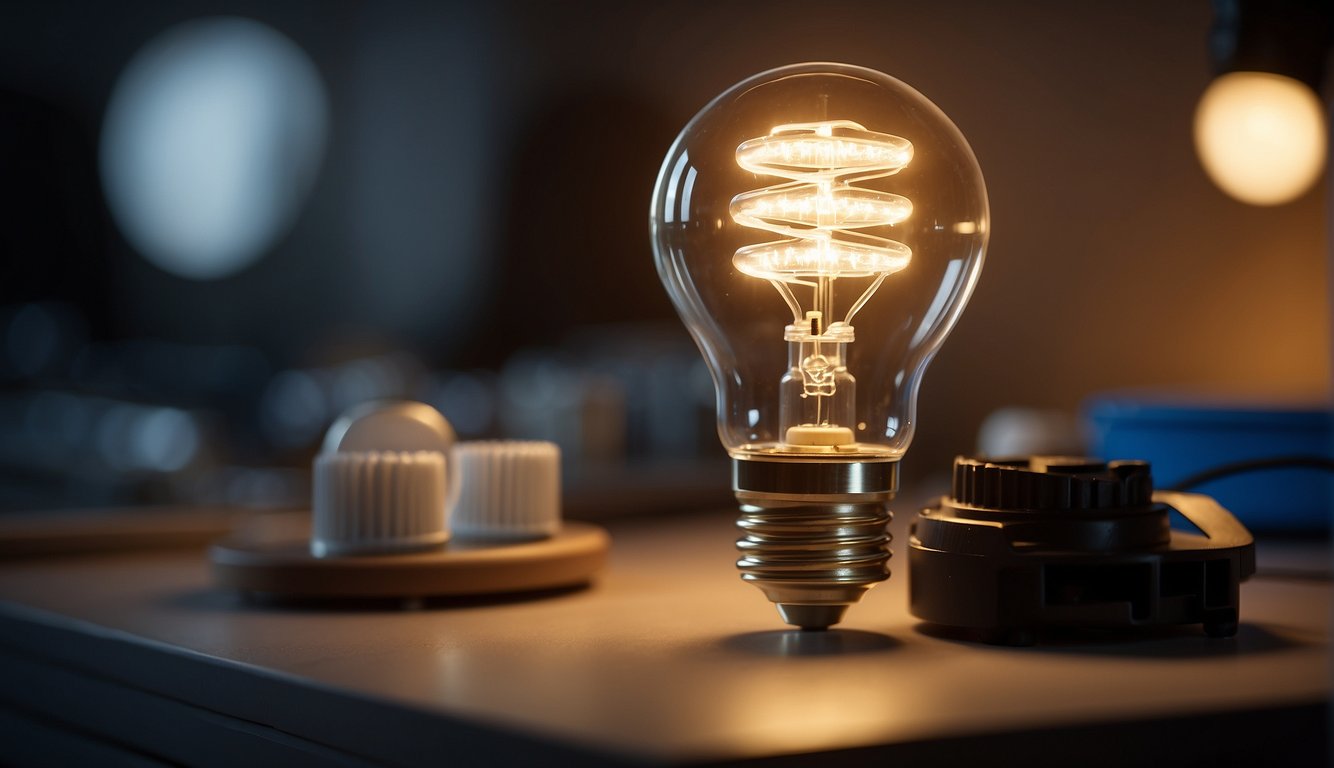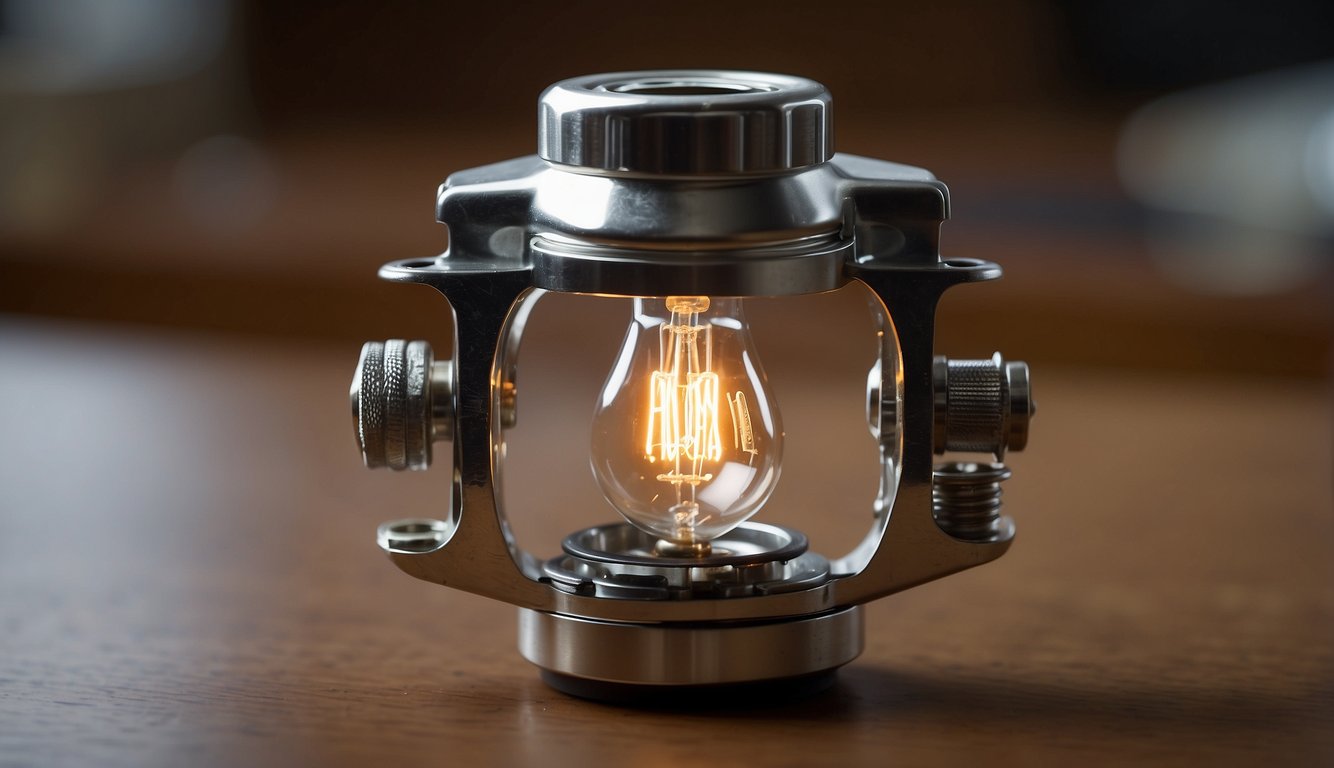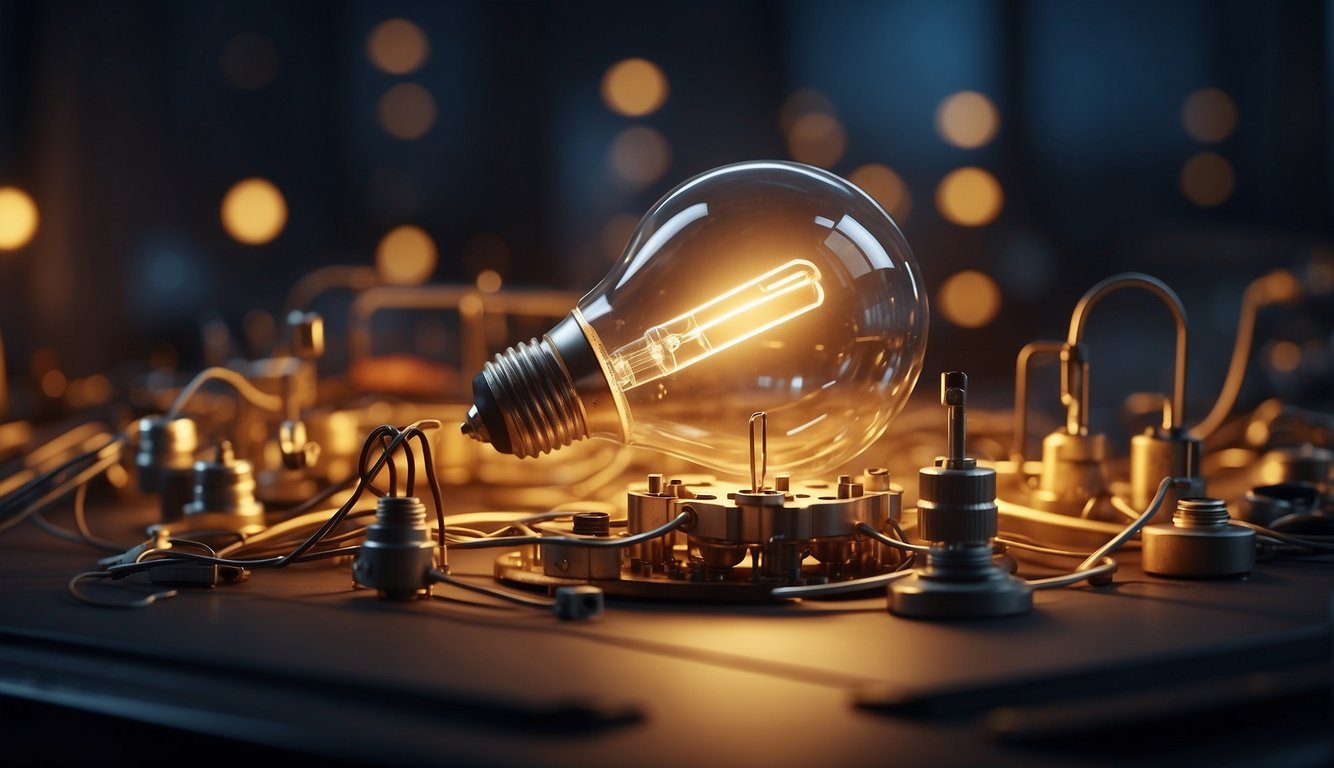Light bulb holders are a fundamental part of any lighting fixture, providing not just the physical support for the bulb but also the critical electrical connections necessary for the bulb to illuminate. These components are found in a wide range of environments from residential to commercial spaces. Understanding the different parts of a light bulb holder and their functions is essential for anyone looking to replace or upgrade their lighting fixtures, as well as for those interested in DIY projects involving lighting.


The construction and design of a light bulb holder can vary, but they generally include the base, which connects to the light fixture, and the socket, which holds the bulb. Different types of bulb holders are available to accommodate various bulb types and shapes, ranging from small incandescent bulbs to larger, energy-efficient LEDs. Ensuring compatibility between the light bulb and the holder is crucial for both function and safety. Holders are also made from a variety of materials and may include safety features to prevent electrical hazards. Proper installation is vital to avoid common issues such as flickering or a non-functioning bulb.
Key Takeaways
- Light bulb holders are integral for bulb support and power supply.
- Compatibility and proper installation of holders prevent hazards.
- Diverse materials and designs cater to aesthetic and functional needs.
Overview of Light Bulb Holders

When you’re setting up lighting in your home or workplace, understanding the basics of light bulb holders is crucial. A light bulb holder, also known as a socket or lamp holder, is the part of a lamp or light fixture that provides mechanical support and electrical connections for the light bulb.
Types of Bulb Holders
Common types of bulb holders include:
- Edison Screw (ES): Characterized by their threaded design, typically referred to as E27 (standard size) or E14 (small size).
- Bayonet Cap (BC): These have a push-and-twist motion to lock the bulb in place, with sizes like B22 (standard size).
- Pin Types: Often found in fluorescent and halogen light systems, they have two pins that plug into the holder.
Materials
Bulb holders are made from various materials, including:
- Metal: Typically aluminum or brass, used for its durability.
- Ceramic: Offers high heat resistance.
- Plastic: Common for its cost-effectiveness and insulation properties.
Electrical Connections
Your lamp holder is where the electrical connections meet. It must match your bulb’s voltage rating and wiring setup. Installation should always be done carefully, and if you’re ever in doubt, consult a professional electrician to ensure safety and functionality.
By familiarizing yourself with the different types and materials of light bulb holders, you can make informed decisions when purchasing or replacing them, ensuring your lighting routine runs smoothly and safely.
Types of Bulb Holders
https://www.youtube.com/watch?v=vOAU8iAYmhQ&embed=true
Choosing the right bulb holder is essential for ensuring your light fixtures not only fit the aesthetic of your room but also function correctly. The variety available caters to different electrical and mounting requirements, as well as design preferences.
By Shape and Style
Bulb holders come in a range of shapes and styles designed to complement the look of your lamp or light fixture. For example, your table lamp may utilize a decorative e27 bulb holder, which is commonly seen in desk and floor lamps for its classic look and easy screw-in feature. Some bulb holders have a simple, utilitarian design, while others serve more ornate or unique styles that contribute to your decor.
By Socket Standard
The socket standard of a bulb holder dictates what type of bulb can be accommodated. The e27 socket, also referred to as an Edison screw, is among the most universally used for its wide compatibility with various bulb types. It’s vital to match the bulb holder socket with the right bulb — a mismatch won’t provide the electrical connection needed to light your bulb.
By Switch Type
Depending on your needs, you’ll find bulb holders with different types of switches. You could opt for a holder with an integrated switch for ease of use, allowing you to turn your light on and off with a simple twist or pull-chain, placed directly on the holder itself. Alternatively, some bulb holders are designed to work with wall switches or smart systems, offering you remote control over your lighting.
By selecting the right bulb holder, you ensure the perfect fit for your bulbs, both functionally and stylistically, to brighten up your space exactly how you want it.
The Role of the ES in Lamp Holders
« Parts of Incandescent Light Bulbs: Understanding Their Components
CFL Light Bulbs Good for Plants: Boosting Growth Indoors »
https://www.youtube.com/watch?v=EVOwTXHNX7E&embed=true
In your journey to illuminate your space, knowing the specifics of the Edison Screw, commonly referred to as ES, in lamp holders is pivotal for a seamless experience with your lighting fixtures.
Understanding ES
The Edison Screw (ES) is the standard socket design that your light bulbs twist into. Originating from Thomas Edison’s design, the ES is a hallmark of lamp holder connections. It boasts a simple yet effective design: a cylindrical base with a helical ridge that ensures a secure electrical contact with your bulb. When you insert and twist the bulb into position, it’s the threads of the ES that lock it in place, ensuring stability and electrical connectivity in your lamp.
Compatibility with Light Bulbs
Your ES lamp holder’s compatibility with light bulbs is governed by the size of its screw base. The most prevalent ES size in domestic settings is the E27, indicating a screw diameter of 27 millimeters. This means that when you’re choosing light bulbs for your lamp, you should look for bulbs marked with ‘E27’ to guarantee a compatible fit. Compatibility extends beyond just size, as your ES lamp holder is designed to support various bulb technologies, ranging from traditional incandescent bulbs to more energy-efficient LEDs. This versatility ensures that whatever the advancement in bulb technology, your ES lamp holder can adapt, making it a practical and enduring choice for your lighting needs.
Light Bulb Compatibility

When you’re selecting a light bulb for your lamp or fixture, ensuring the compatibility of the bulb with your holder is crucial. Not all light bulbs will fit or function correctly, so it’s important to pay attention to size, fit, and electrical specifications.
Size and Fit
The size and fit of a light bulb are determined by the type of base it has, which must match the lamp holder. For example, if your lamp holder is designed for screw-in bulbs, you must use bulbs with screw bases, like the common E-26 or E-27 Edison screw. Conversely, pin-type bulbs, such as a bi-pin GU10, will not fit into a screw-type holder. Light bulbs and holders follow a standardized naming convention to help you match them correctly.
- Common Base Types:
- Screw base: E-26 (Standard in the US), E-27 (Standard in Europe)
- Pin base: GU10, GU5.3
- Bayonet base: B22d
Electrical Specifications
Beyond the physical fit, light bulbs need to be compatible with the electrical specifications of the lamp holder. This includes voltage, wattage, and current type (AC or DC). If your lamp holder is rated for a maximum of 60 watts, fitting a bulb with a higher wattage could lead to overheating or electrical hazards. Ensure you check the lamp’s rating and use bulbs that meet these electrical requirements for safe operation.
- Electrical Rating Example:
- Voltage rating: 110V-120V (US standard), 220V-240V (Europe/Asia standard)
- Maximum wattage: e.g., 60W
- Current type: Alternating Current (AC) is the standard in household lighting
Remember to always check the lamp holder’s specifications and the light bulb package to guarantee they’re compatible.
Materials Used in Holder Construction

When selecting a light bulb holder, it’s essential you consider the materials used in its construction. These materials determine both the holder’s functionality and its longevity.
Common Materials
- Ceramics: Highly resistant to heat, ceramic holders are commonly used in environments where temperatures may be high.
- Plastics: For holders requiring less heat tolerance, various plastics are used, including PVC and thermosetting plastics. These are lighter and often more cost-effective.
- Metals: Brass, aluminium, and copper are frequently utilized for their conductivity and durability. Brass, in particular, is noted for its resistance to corrosion.
Durability Concerns
The durability of a bulb holder is closely linked to the materials used during the creating process.
- Heat Resistance: Ceramic holders outperform others in high-temperature scenarios, reducing the risk of melting or damage.
- Corrosion Resistance: Metals like brass are chosen for areas with high moisture to prevent rusting and ensure a longer life for the holder.
- Physical Impact: Robust materials such as metals can withstand more physical impact compared to plastics, which may crack or break upon force.
Safety Features of Bulb Holders

When you’re choosing a bulb holder for your lighting needs, safety is a top priority. These fixtures play a crucial role in preventing electrical hazards. Here’s what to look out for:
Heat Resistance: Your bulb holder should be able to withstand the heat emitted by the bulb without deforming or melting. Materials such as ceramic are often used for their excellent thermal properties.
Electrical Insulation: An effective lamp holder will be designed with insulation that protects you from electric shocks. It ensures the electrical connection is secure and only where it should be.
Firm Grip: A reliable socket will hold the bulb firmly in place, reducing the risk of it becoming loose, falling out, and potentially causing damage or injury.
Taking a closer look, here’s what a well-designed lamp holder typically includes:
| Feature | Why It’s Important |
|---|---|
| Shock-resistant materials | To protect you from accidental electric shock. |
| Secure fit | Prevents the bulb from dislodging and breaking. |
| Durable construction | Ensures long-term safety and function without degradation over time. |
For instance, recent guides emphasize the importance of proper installation to avoid electrical risks such as short circuits or fires.
As you opt for your next bulb holder, remember that quality and design matter. It’s not just about how it looks or how well it fits into your decor; it’s about how safely it functions day in and day out. Go for holders that have certifications or marks from recognized standards bodies, as these products have been tested for safety and reliability.
Installation Process of Bulb Holders
https://www.youtube.com/watch?v=5LQK_FzfKWg&embed=true
Installing a light bulb holder correctly is essential for ensuring safe and effective operation of your light fittings. You’ll need the proper tools and a clear, step-by-step approach.
Tools Required
You will need the following tools:
- Screwdriver: Choose one that matches the screws on your light fitting.
- Wire Stripper: To remove the insulation from the ends of the wires.
- Voltage Tester: To ensure the electricity is off in the wires you’ll be working with.
- Wire Connectors: To safely connect the wires.
Step-by-Step Guide
Safety First: Before you begin, ensure that the power is off at your main circuit breaker or fuse box to prevent electric shock.
Prepare the Holder: Unpack the light bulb holder, and if applicable, remove any covers or shells that may obstruct the wiring terminals.
Strip the Wires: Using the wire stripper, strip off approximately 3/4 inch of insulation from the ends of the wires to expose the copper strands.
Attach the Wires:
- For holders with screw terminals, wrap the exposed copper wire around the screws – typically, the live wire (often brown) goes to the brass screw, and the neutral wire (often blue) to the silver screw.
- Tighten the screws to secure the wires without over-tightening.
Fix the Holder: Screw the base of the holder into the fitting. This may involve aligning screw holes and tightening with your screwdriver.
Final Checks:
- Use the voltage tester to ensure no power is present in the holder before proceeding.
- Ensure all connections are secure, and no bare wires are visible.
Turn Power On: Once the holder is installed, turn the power back on at the breaker box and test the installation by inserting a bulb and switching on the light.
Troubleshooting Common Holder Issues
https://www.youtube.com/watch?v=Y9P7SP8bxtw&embed=true
When your light bulb doesn’t illuminate, the issue could stem from either electrical problems within the holder or physical damage to the holder itself. It’s important to methodically check these potential problems to find a safe and effective solution.
Electrical Problems
Electrical issues within a bulb holder can range from simple to complex. Here’s what to look for:
- No Power: First, verify that your electrical circuit is live. Use a voltage tester to ensure current is reaching the holder.
- Loose Wiring: Inspect any connections leading to the holder. Tighten any loosened wire nuts or terminal screws.
- Faulty Switch: A malfunctioning switch may prevent power from reaching the bulb. Test or replace it if necessary.
- Burned Socket: Look inside the holder for scorch marks that indicate a poor connection which may require cleaning or replacement. Helpful guidance on electrical troubleshooting can be found at The Spruce.
Physical Damage
Physical damage to the bulb holder may not be as obvious but can be just as problematic:
- Cracked Holder: Examine the holder for cracks or breaks that can compromise the fixture’s integrity, necessitating replacement.
- Corrosion: Check for rust or corrosion, particularly in areas with high humidity, which can lead to poor electrical contact.
- Deformed Contacts: The metal tab inside the holder should be properly aligned to make contact with the bulb. If flattened, carefully bend it upward.
- Worn Threads: Bulb threads can wear over time and may not secure the bulb properly. If this is the case, consider replacing the holder for a secure fit.
By paying close attention to these aspects, you can often diagnose and fix common issues with light bulb holders. Remember to always prioritize safety by ensuring the power is off before performing any checks or repairs.
Design Trends in Light Bulb Holders

When you’re looking to spruce up your space, the latest design trends in light bulb holders can make a significant impact. Today’s choices combine form and function, infusing style and contemporary design sensibilities into every aspect of lighting.
Aesthetic Appeal
Your choice of light bulb holder can transform the ambiance of a room. Recently, vintage industrial styles have seen a resurgence, with Edison screw lamp holders being popular for their classic look. These holders often feature exposed wiring for an edgy, retro flair, or they might be encased in sleek, colored metals for a more modern take. Shape plays a big part in the aesthetic appeal – a simple change from a conventional round holder to a geometric one can entirely alter the vibe of the lighting.
Innovation in Design
Innovation in light bulb holder design brings ease of use and customization to the forefront. Smart home integration allows you to adjust lighting with the convenience of your smartphone or voice commands. In terms of style, minimalistic designs with clean lines are in vogue, alongside holders that allow for easy swapping of bulbs to suit your changing style needs. Look out for magnetic light bulb holders that not only add a contemporary look but also simplify the process of changing light bulbs – no screwing or twisting required.
As you explore the world of light bulb holders, consider how the shape and style can elevate your decor, while innovative design features can enhance the functionality and flexibility of your lighting solutions.
Energy Efficiency and Sustainability

When you choose parts for your light bulb holder, considering energy efficiency and sustainability can lead to significant long-term savings and a positive environmental impact. It’s not just about the bulb you use; the holder plays a role too.
Energy-Saving Holders
Energy-saving holders are designed to work optimally with energy-efficient bulbs, such as LEDs or CFLs. These holders often feature integrated dimming capabilities or automatic shut-off to further reduce power consumption. For example, an LED-compatible holder can reduce energy use — pairing it with an energy-efficient LED bulb maximizes your fixture’s eco-friendliness.
Eco-Friendly Materials
In the spirit of sustainability, eco-friendly materials for light bulb holders go a long way. Materials like recycled aluminum or responsibly sourced wood not only have a lower environmental footprint but also add a touch of natural beauty to your lamp. Seeking out sustainable light bulb holders made from biodegradable or recycled content can make your lighting choice even greener.
Regulations and Standards for Light Holders

When selecting light fittings for your home or establishment, it’s crucial to understand the regulations and standards that ensure safety and energy efficiency.
Safety Standards:
Bare-bulb light fixtures, commonly referred to as lamp holders, were once porcelain and are now often made of plastic. While these holders are code-approved, they are not suitable for all applications. Specifically, you should avoid using non-enclosed bulbs in areas like closets where materials could come into contact with the bulb and pose a fire hazard.
- Interior Use: Allowed with limitations.
- Exterior Use: Not rated.
- Closets: Prohibited.
Energy Efficiency:
Recent energy efficiency standards have been introduced to reduce consumption and save on energy bills. The standards encompass the type of bulbs used in the light holders, pushing for more efficient alternatives that meet specific criteria.
Types of Sockets:
Edison screw and bayonet mounts are the two dominant types of socket interfaces you will encounter.
- Edison Screw (ES)
- E27 (Standard Screw): Diameter of 27mm.
- E14 (Small Edison Screw): Diameter of 14mm.
- Bayonet Cap (BC)
Coding Standards:
Lighting codes such as the International Energy Conservation Code (IECC) or ASHRAE/IES 90.1 are benchmarks for construction and renovation projects. They provide guidelines that ensure your lighting setup meets current environmental and safety criteria. The IECC is updated every three years, with the most recent version being 2021.
It’s beneficial to familiarize yourself with these guidelines. By keeping informed, you ensure that your light holders are not only legally compliant but also contribute to a safer and greener environment.




